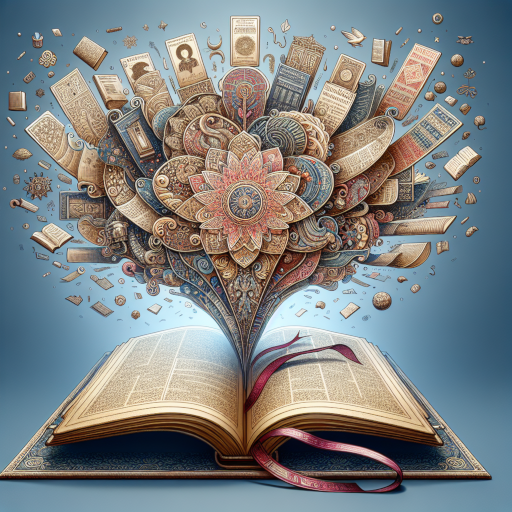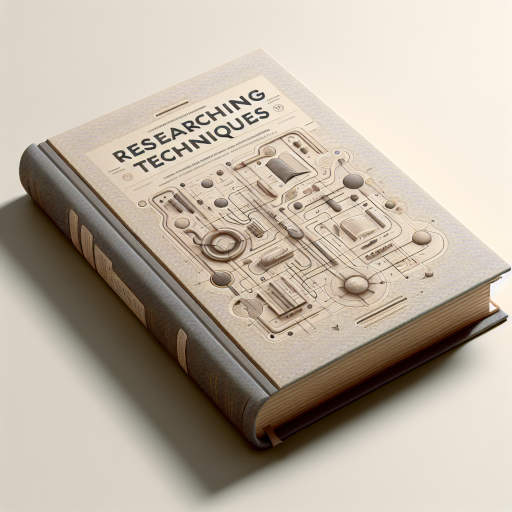Nonfiction: it’s a genre that often serves as a beacon of enlightenment, inspiring readers through real-world experiences and factual information. Guiding audiences along the path to knowledge is a noble endeavor; however, it requires a robust grasp of effective nonfiction writing techniques. Welcome to your Comprehensive Guide on How To Write a Nonfiction Book.
Before we begin this guide on how to write nonfiction, if you would like some help writing your nonfiction book, checkout our popular AI Nonfiction Book Writer and our free nonfiction book generator.

In an ocean of nonfiction literature, what exactly makes a great nonfiction book stand out? It’s not merely about presenting facts or recounting events. Instead, it involves crafting an engaging narrative that appeals to and educates a specific audience. But worry not! This guide will equip you with the skills you’ll need to master this art form.
You may have stumbled upon cliches such as “nonfiction writing is dry and rigid,” or “if you can pen down facts, you can write nonfiction.” It’s time to debunk these misconceptions! Just like its fictional counterpart, nonfiction writing can capture imaginations, stir emotions, and trigger thoughts. The distinguishing factor? All of this is achieved within the confines of factuality and reality.
The expansive terrain of nonfiction writing provides ample room for creativity. From riveting narrative nonfiction that weaves captivating stories around facts, to solution-oriented pieces that tackle problems head-on, there’s no limit to the forms nonfiction can take. One thing remains constant – their core purpose: to educate and inform the reader. Equipped with the right tools and insights, writing impactful nonfiction books can be an exciting journey!
Understanding Nonfiction Writing

In the realm of literature, labelling a book as ‘non-fiction’ indicates that its contents stem from reality rather than imagination. Nonfiction books can encompass an array of subject matters, each rooted in fact and research. These might include history, science, biographies, self-help guides, and countless other topics. Your guide to writing great non fiction begins with a firm understanding of what nonfiction entails.
Research is the bedrock upon which successful nonfiction writing rests. This process involves extensive exploration into your chosen topic. It requires painstaking effort to ensure every fact is accurate, every argument sound, and every perspective considered. Keep in mind that the credibility of your work directly hinges on the reliability of your research.
But it’s not about merely collating data or facts—it’s also about knowing how to present them effectively. The right Nonfiction Book Structure allows your material to flow logically while your reader navigates through the narrative journey you’ve crafted. A well-planned outline is the roadmap that guides this journey—an integral part of crafting informative yet engaging nonfiction content.
Moreover, identifying your target audience is crucial in shaping your nonfiction book. Who are you writing for? What are their interests? What do they already know about the subject, and what can you add? Answering these questions will allow you to tailor your content accordingly.
A common misconception amongst budding authors is believing that storytelling only applies to fictional works—this couldn’t be further from the truth! Real-life events and experiences can be just as—if not more—compelling than imagined narratives. The power lies in how you relay these facts and figures; how you transform them into compelling stories that draw readers in. This approach is referred to as ‘Narrative Nonfiction’, a potent tool in the writer’s arsenal.
The key difference between nonfiction and fiction storytelling lies in their essence—where fiction has the liberty to invent, nonfiction is bound by truth. However, this doesn’t entail that nonfiction content must be bland or dull. On the contrary, it demands creativity in presenting facts attractively, thereby keeping your readers hooked from start to finish.
Understanding and mastering these aspects can make the journey of converting factual content into an immersive reading experience much simpler. It opens gates to a world where boundaries of reality can be pushed, compelling narratives can be crafted, and readers can be simultaneously educated and entertained—a world where you can write engaging non-fiction material with confidence and flair.
Mastering Nonfiction Writing Techniques

The essence of ‘writing nonfiction books’ is storytelling—expressing facts and real-life experiences compellingly. But to do so, you must wield a variety of techniques and strategies that bring your narrative to life. Mastering these can significantly enhance the quality and impact of your nonfiction work, marking the difference between informative yet dull text and a captivating piece that resonates with readers.
Effective Nonfiction Writing starts with clear, concise content. By eliminating unnecessary jargon or overly complex sentences, your writing becomes more accessible and enjoyable for a broader audience. Keep in mind that simplicity doesn’t equate to dumbing down; you are not reducing the value of information but making it more digestible for the reader.
In nonfiction, structure plays a vital role. It’s akin to constructing a building: without a solid framework in place, no amount of decorative details can save it from collapsing. This is why understanding and applying proper Nonfiction Book Structure is paramount. Whether you’re using chronological arrangement, thematic organization, problem-solution format or other structures, ensure it serves your content’s purpose and enhances readability.
Another effective technique is showing rather than telling. Yes, you’ve accumulated facts—now show your readers what they signify instead of merely stating them outright. Use examples, anecdotes, or statistics to illustrate points vividly—this brings forth emotions from your readers and helps them form connections with the subject matter.
A ‘Step-by-Step Guide’ approach can be beneficial in certain types of non-fiction writing, especially instructional or self-help genres. This method involves organizing content into an easy-to-follow sequence—which not only aids comprehension but also allows readers to implement learned concepts progressively.
An often overlooked yet vital element is your writing style—the voice that conveys your story. Remember, a non-fiction book isn’t an academic thesis; it should be engaging and personable. Your ‘Nonfiction Book Style Guide’ can vary from informative to persuasive, humorous to serious, depending on the genre and target audience. Yet, it must consistently reflect authenticity—your unique author’s voice.
Another powerful tool at your disposal are real-life stories. By weaving facts into compelling narratives, you not only construct an absorbing read but also create a deeper understanding and recall of information for readers. This evolution from mere reporting to narrating—known as ‘Narrative Nonfiction’—can be the key to writing captivating nonfiction books.
As you progress in your writing journey, don’t shy away from experimenting with different techniques and styles until you find what works best for your content—and for you as an author. This process is part of the art of nonfiction writing: flexibility, exploration, and continuous learning.
How To Publish Nonfiction – Navigating the Publishing Process

After investing hours of meticulous research, careful outlining, and passionate writing into your nonfiction book—what’s next? It’s now time to journey into the world of publishing—where ideas become tangible books and authorship turns public! This can be a daunting endeavor, but this step-by-step guide aims to simplify the process for you.
Contrary to popular belief, getting a book published is not merely about submitting your completed manuscript to publishers and waiting for their acceptance. The reality involves several more steps including proposal submission, acquiring an agent, negotiating contracts and navigating through editorial processes along with marketing your book effectively.
You might ask – why do I need a literary agent? Predominantly, agents have industry-insider contacts and knowledge that you as an author may not possess. They know which publishers would be interested in your content genre, they often ensure fair contract negotiations on your behalf, they can provide career guidance—and most importantly—they get your proposal read by publishers who don’t accept unsolicited submissions.
Once your manuscript has been accepted by a publisher (celebrate this success!), there are further stages like editing, design layouting, cover creation and finally printing. Authors often underestimate the importance of the post-acceptance stages—seeing them as mere technicalities. But remember—the look and feel of your book contribute significantly towards its reception by potential readers.
While it may be tempting to rush through these stages in anticipation of seeing your book in print, patience here pays off immensely in the long run. Give diligent attention to every detail—from choosing the right font size to crafting an attractive cover design—each element collectively enhances the appeal of your final product: A successful nonfiction book!
One crucial aspect of the publishing process is understanding the viewpoint of your reader—what they seek in a non-fiction book, and how they perceive distinctive publishers. ‘Nonfiction Book Reviews’ provide insightful readers’ perspectives into what worked well for them, making it an invaluable resource for authors looking to improve their craft.
Publisher reputation also plays a pivotal role—not only are certain publishers preferred by readers, but they also hold credibility in the industry. An established publisher’s imprint on your book can be an assurance of quality content to potential readers. Hence, choosing the right publisher becomes as important as creating tantalizing content.
As you navigate through the publishing process, always remember—each step taken brings you closer to sharing your knowledge and ideas with millions around the world. Stay persistent and stay resilient! Your journey as a published nonfiction author is just beginning—a thrilling adventure awaits you ahead!
Choosing Your Non-Fiction Genre
The world of non-fiction is anything but uniform. It’s a vibrant kaleidoscope, featuring a mesmerizing array of colors — or in this case, genres. Through your journey as an aspiring author, you may wonder which genre of non-fiction aligns best with your style, content, and target audience. We’ll embark on the exploration into various types of nonfiction, each with its unique characteristics and charm.
Let’s begin with ‘Narrative Nonfiction’—arguably one of the most popular forms of non-fiction writing today. Simply put, it masterfully interweaves elements of storytelling with factual details to paint vivid pictures in a reader’s mind. Engaging narratives that recount real events or individuals’ lives present an exciting way for readers to glean knowledge while being immersed in a well-crafted story.
Self-help books represent another thriving genre within non-fiction. These guides often utilize a ‘Step-by-Step Guide’ methodology to help readers improve various aspects of their lives—from personal growth and motivation to mastering new skills. This genre firmly stands on the pillar of practicality—the closer your content relates to realistic challenges faced by readers, the more impactful it becomes.
Biographies and autobiographies are genres that delve deep into an individual’s life—exploring their personal journeys, accomplishments, and struggles. As an author seeking to write such a book, you must display incredible accuracy when presenting facts about someone’s life —after all, these are real people you’re discussing!
Historical nonfiction covers topics ranging from ancient civilizations to modern historical events. The success of this genre rests heavily on meticulous research and the ability to weave engaging narratives based on historical facts.
Science-related works comprise another popular genre of non-fiction. These books require an in-depth understanding of scientific concepts, coupled with the ability to translate complex theories into comprehensible language.
Then we have ‘How-to’ & ‘DIY’ books—another member of the practicality family, focusing on providing detailed guides on accomplishing various tasks ranging from cooking recipes to home improvement projects. The aim is for readers to apply acquired knowledge directly into their lives—if your instructions are clear and straightforward, you’re on the right track!
With numerous genres to choose from and even more subcategories within each, it can seem overwhelming. But fear not! Your task isn’t constrained to selecting one sole genre. Non-fiction allows for a blend of genres—a story-driven cookbook or a historical piece with elements of self-help, examples are boundless.
The genre selection process becomes less about boxing your book into a predefined category and more about figuring out which genre—or combination thereof—best serves your content and appeals to your target audience. After all, crafting captivating non-fiction is about enriching your reader’s life —the more you align your book to their preferences and needs, the better it will resonate with them.
Conclusion
In conclusion, writing great nonfiction books requires not just a passion for the subject matter but also a mastery of effective writing techniques. Through this comprehensive step-by-step guide, you have gained valuable insights into what makes a nonfiction book captivating and how to craft one that resonates with readers.
Remember, nonfiction writing is not limited to dry recitations of facts; it offers endless possibilities for creativity and engaging storytelling. By debunking common myths and clichés about nonfiction writing, you can approach your work with renewed confidence and a fresh perspective.
Throughout this article, we have explored essential aspects of nonfiction writing, including understanding the genre, mastering techniques, navigating the publishing process, and choosing the right genre for your book. Armed with knowledge and practical tips, you are now equipped to embark on your own nonfiction writing journey.
As you continue to refine your skills, remember to experiment with different techniques and styles that best suit your content and target audience. Writing is an evolving art form, and constant improvement is key to connecting with readers on a deeper level.
We hope you enjoyed this guide on how to write nonfiction books, we also have guides on other types of writing too like writing flash fiction.